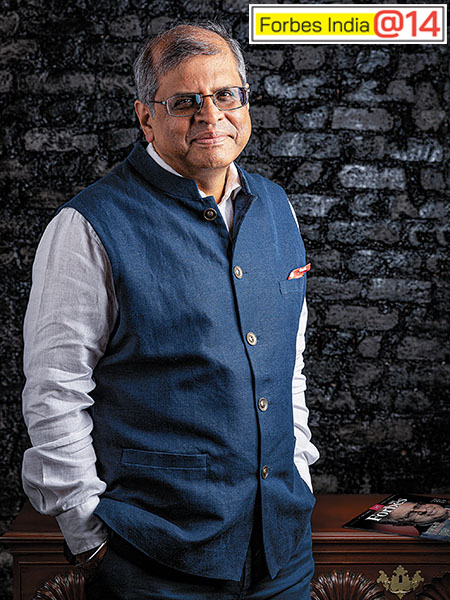
Giving as a percentage of wealth emerging highest among professionals: Amit Chandra
In 2020, Amit Chandra, chairperson of Bain Capital India and co-founder of the ATE Chandra Foundation, was featured on our cover signifying how philanthropy is moving beyond billionaires to include professionals. Three years later, he reflects on how things have moved forward, and why he is optimistic about professional giving in India
 Amit Chandra, chairperson of Bain Capital India and co-founder of the ATE Chandra Foundation
Image: Mexy Xavier
Amit Chandra, chairperson of Bain Capital India and co-founder of the ATE Chandra Foundation
Image: Mexy Xavier
The pandemic resulted in a lot of professionals and first-generation entrepreneurs coming together and forming collaborations to solve a societal problem.
One example is ACT Grants, which was established by professionals from the VC industry, including Shekhar Kirani from Accel, Mohit Bhatnagar from Sequoia India and Anjali Bansal of Avaana Capital, to support Covid-19 relief measures. We worked with them on cutting-edge initiatives like conducting seroprevalence studies and establishing genome labs. I also remember during the first and the second waves, we collaborated with leaders like Noshir Kaka (McKinsey India), Vicky Oberoi (Oberoi Realty), Banmani Agarwala (Tata Sons), Abhay Soi (Max Healthcare), and the late Rakesh Jhunjhunwala in solving very specific scale problems in a timely manner. Whether it was supplying 10 million meals during lockdowns or helping the municipal corporation in Mumbai and others set up health care centres, ICUs, and genome labs. If it weren’t for the pandemic, many of these collaborations would not have happened. I guess when the going gets tough, you’ll discover a lot of people who want to get going.
Post Covid, I’ve also seen a spurt in professionals and first-generation entrepreneurs making impressive philanthropic commitments. That said, we are still in the early stages of a very long journey.
New-age professionals seem to care more deeply about outcomes as opposed to simply building an asset that has their name on it or writing a cheque. For many, this is much more about learning and contributing to a theory of change, rather than just wanting a seat on the board to control because they’ve given money. That’s a very different approach to giving.
 Also read: How India Inc is investing money to turn the nation into an Olympic powerhouse
Also read: How India Inc is investing money to turn the nation into an Olympic powerhouseThere is not enough data around how much professionals are giving, given cut-offs in lists tend to be higher and therefore most do not get featured in philanthropy lists. An exception is a movement called LivingMyPromise where nearly 150 Indians who are not billionaires (mostly professionals) have publicly pledged to donate more than half their wealth by the end of their lifetime.
My suspicion is that when we get data on percentage of wealth or income, we will find that first-generation entrepreneurs, professionals and the middle class give more generously. They are also more likely to give more as a percentage and the numbers can run into millions. Therefore, I am optimistic about the future for Indian philanthropy.
It is going to be easier for the percolation of the notion among professionals and first-generation entrepreneurs that they can help change society with what they are blessed with: Money, skills and networks. That’s because many who are inheritors of wealth also consider it their responsibility to make sure that a large amount of that wealth is preserved and passed on to the next generations. This is a burden many professionals and first-generation entrepreneurs don’t necessarily feel. They do have the desire for a good life, to keep something for family commitments, but at the same time, a reasonable percentage feel they want to do something more with their wealth and intellectual capabilities in their lifetime. I see this a mega trend that bodes well for Indian society.
(As told to Divya Shekhar)
(This story appears in the 16 June, 2023 issue of Forbes India. To visit our Archives, click here.)

















